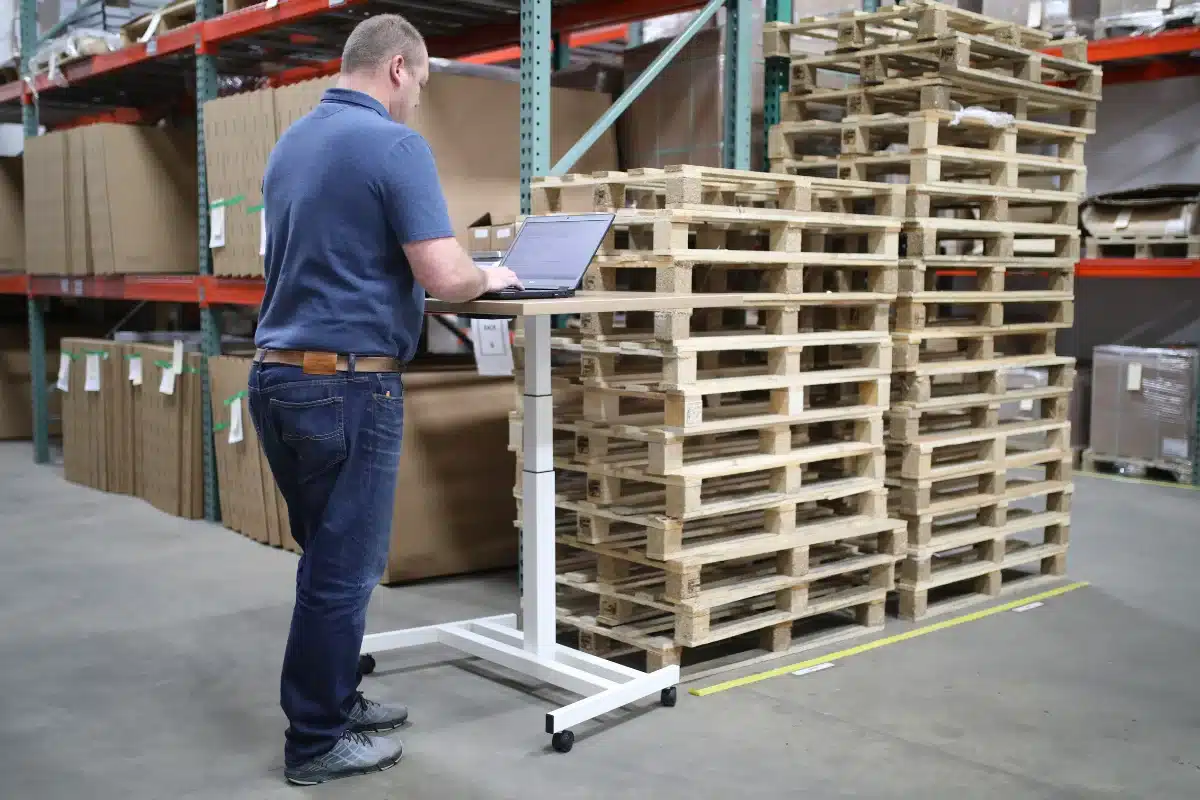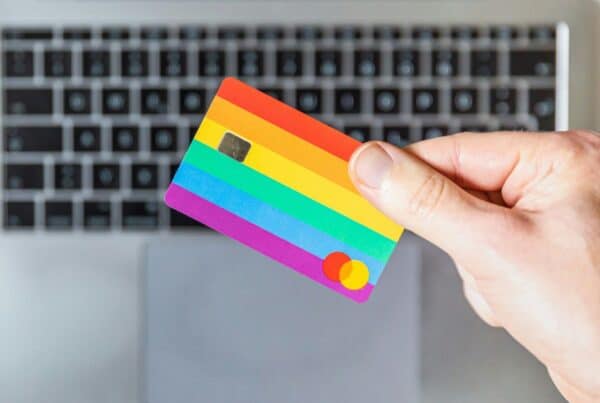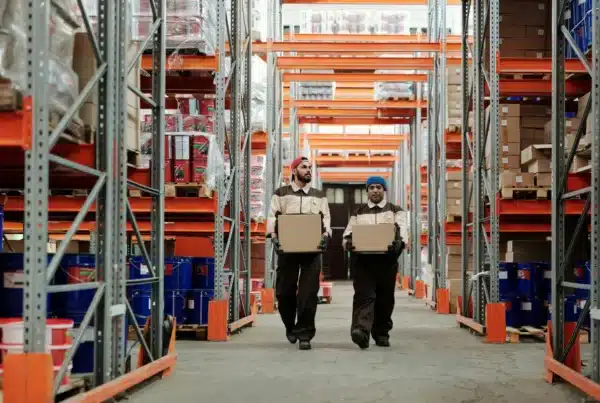
A product recall has the potential to be financially devastating.
The costs involved are enormous, and – if handled poorly – the damage can quickly spiral out of control, destroying both consumer confidence and your brand reputation. The scale of the logistics needed to handle a recall effectively are also well out of the reach of most businesses.
This is why it’s always recommended that a business has a product recall strategy in place. Believing it will never happen to you does nothing but leave you unprepared if the worst happens.
Despite this, 70-80% of the roughly 260,000 manufacturing companies in the US don’t have a product recall policy, according to Chubb. This puts them in danger of crippling financial damage and legal consequences if they are caught off guard.
In this article, we explore the causes of recalls, and how a well-managed product recall procedure can reduce escalation, keep costs low and protect your brand’s reputation.
Why do product recalls happen?
When a recall is initiated by a manufacturer, it may start out as a voluntary recall as a response to customer concerns or complaints. This will be done through “proactive consumer communications” — the company reaching out to consumers to inform them of the recall and what actions to take. This may be as far as things go, but if the FDA or CPA deems it necessary, it may progress to a full-scale recall.
Recalls can be initiated for a range of reasons, but are typically related to a mistake or oversight in the manufacturing process:

What are the risks of getting product recalls wrong?
A product recall is already an expensive process before any mishandling. According to AGCS, the average cost of a significant incident is in excess of $12 million. However, if a recall drags on, or is poorly handled, costs can balloon due to a variety of factors:
5 Key Elements of an Effective Product Recall Process
A poorly handled recall can either be the start of years of difficulty for your business, or even the final nail in its coffin. However, if you take steps in advance and prepare for the worst, you can greatly mitigate this risk.
This will be a “recall ready” plan — the foundation on which your recall strategy will hinge. It will look different from business to business, but it will involve creating a cross-functional recall team, performing mock recalls and ensuring quality management systems are in place, as well as means of maintaining data integrity.
Developing an effective product recall plan will also involve considering elements such as the accident/complaint threshold needed to trigger a recall, and the way post-recall evaluations will be conducted and corrective action plans created to make potential recalls more efficient in the future. This preparation should all be undertaken when a product recall is just a possibility, not a reality.
However, once a business initiates a recall, there are five key elements that should be focused on to ensure the process is as effective and efficient as possible:
Speed
Communication
Documentation
Capacity
Certification

Speed
Agility is critical to an effective product recall. Your product has been found to have a defect or safety issue. As the manufacturer, you are responsible if people are hurt, or worse, fatally injured by this product. Your corporate reputation could be irreparably damaged, and your business held liable for corporate negligence. Both of these will come with severe financial consequences.
Responding quickly will mitigate the impact of this product issue in a number of ways:

Communication
When a product is recalled you will need to alert suppliers upstream to warn them that it is being discontinued or altered. You will also need to keep the relevant regulatory authorities updated on the progress of your recall. Most importantly, you will need to communicate with those downstream about the nature of the issue and the next steps for them to take.
Contacting consumers and vendors
Your process for contacting these downstream parties will vary depending on the classification of the recall. In some cases you may only need to distribute posters that provide customers with the necessary information. In others, they may need to be contacted via email, letter or phone call.
The scale of communication
The scale of these communications can be enormous. Many recalls will require you to prove you attempted to contact 100% of the downstream recipients of the defective product.
Depending on whether it was distributed to vendors for sale, shipped to doctors or dispensaries or fulfilled directly to your customers, this may be entirely beyond your abilities. The number of people who use your product, and the size of the recall (whether it’s just a few batches that are defective or the entire line), may mean you have to contact tens of thousands of individuals.
Providing further information
Customers will likely also have questions about the next steps they should take. For example, whether the product should be returned or disposed of, or (if the product is merely defective, but not in a way that is harmful) how it should be best used to mitigate the problem.
So, as well as organizing outgoing communications with customers, you may also need to assign teams to handle incoming inquiries. Both outbound and inbound communication teams will need to be trained to provide customers with accurate information and de-escalation tactics.

Capacity
The ability to contact large numbers of people in the event of a recall is not the only capacity you will need. Having the storage capacity to hold recalled stock is vital.
Warehouse space
When a recall is issued, you will need to quarantine all the flagged stock currently held in your warehouse. Sometimes this stock can be immediately destroyed on site, but in other cases it may need to be held for weeks, months or even years before the next step. The FDA can require that some defective products are held for 24-36 months in order for tests to be performed.
This can be crippling if you run a lean business operation. A considerable portion of your warehouse space will now be rendered unusable until this product is allowed to be destroyed, or moved to a larger site for quarantine. Even if other product lines are unaffected by the recall, your fulfillment may be hampered by the limited warehouse space causing issues for supply lines.
Transport capacity
If the recall also requires you to retrieve product from consumers or vendors, you will need extra space to store this stock, and the ability to transport it. Having to divert a portion of your logistics to ship large quantities of recalled stock back to the warehouse will limit your ability to fulfill other products. This can be a huge blow to your bottom line.

Documentation
All communication will need to be logged accurately, to prove to regulatory bodies that attempts are being made to contact all who may be affected. The information that needs to be gathered for this is quite particular. We have found that many companies who contacted us to outsource their recall did not have all the essential processes and pieces. This often means that, as the recall process continues, they can’t gather the necessary information.
In addition, having thorough documentation is vital for you to be able to contact all the necessary parties in the event of a recall. If only one or two batches were affected, then you want to be able to contact the relevant consumers or stores directly. The alternative would be contacting everyone downstream, which would be unnecessarily costly and could spread the knowledge of your product defect further than you want. This may cause damage to your brand image that could easily be avoided.
Certification
Conducting a recall isn’t just logistically complex. Depending on the product being recalled, there can be various rules and regulations that need to be adhered to with respect to how they are handled. If you decide to outsource your product recalls to a third party, you should ensure that they are compliant with all the relevant regulations that govern your business.
For example, if your products are under the jurisdiction of the FDA, you should make sure that your outsourced recall partner is FDA and GMP-compliant. The regulations the FDA imposes on manufacturers and distributors are designed to protect public health and safety. Engaging in a recall without complying with these regulations can result in legal consequences, fines and other penalties.
Likewise, when it comes to contacting customers about the recall of a medical product, your outsourced partner should be HIPAA compliant with respect to how the customer’s data is handled. If HIPAA guidelines are breached during a recall, the Office for Civil Rights (OCR) can impose fines of millions of dollars on your business, as well as your recall partner. This is not to mention the civil lawsuits you can both be opened up to, and the reputational damage that can be incurred.

Final thoughts
If you aren’t sufficiently prepared, a product recall can be an incredibly stressful process. However, an experienced partner can make the entire endeavor a far more efficient and effective procedure.
At Harte Hanks, we have helped our partners through multiple recalls over the past 40+ years. With our Fulfillment, Logistics and Customer Care divisions, we are able to guide the entire process in-house. Combine all that with our FDA registration and GMP and HIPAA compliance certifications, and you can be sure you’re in safe hands.
Whether you just need a recall partner, or are looking for an end-to-end fulfillment and logistics provider, we are here to help.
Contact us today

Stephanie is a Fulfillment Account Director at Harte Hanks. As a seasoned professional with over 20 years of industry experience, Steph has successfully managed all aspects of fulfillment and digital print. Her focus is on developing the right solution set to meet her client’s needs, while maximizing budget spend, ensuring quality and remaining on time.



